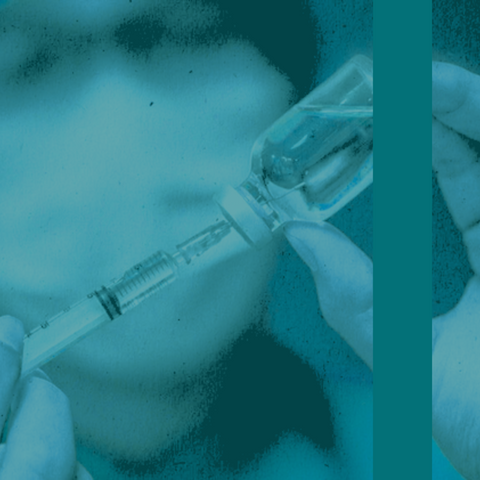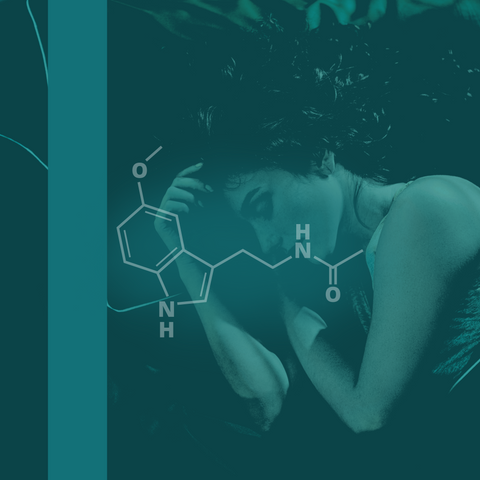
Depression is a common psychological condition that, according to the World Health Organization, is the leading cause of disability worldwide [1], affecting around 4.4% of the population or 322 million people [2]. The prevalence of depression and its associated disorders is increasing, with the number of people living with depression increasing by 18.4% between 2005 and 2015. Major depressive disorder is characterized by the symptoms of depressed mood, loss of interest or pleasure in nearly all activities, as well as fatigue, sleep disturbance, anxiety, and neurocognitive and sexual dysfunction [3]. Most notably, a chief limitation of the antidepressant medications often used to treat the condition is their narrow spectrum of action [3].
Post-traumatic stress disorder (PTSD) is a chronic and disabling psychiatric condition with a lifetime prevalence of 6% in the United States [4]. The condition is prevalent among military personnel and veterans, with approximately 13% of combat veterans from Iraq and Afghanistan having PTSD [5]. As a disorder, it typically manifests in individuals who have experienced traumatic, terrifying, or distressing events. Symptoms include re-experiencing events through flashbacks, recurring memories or dreams related to the event, physical signs of stress, avoidance of triggers, and other mood and arousal-based symptoms. Despite its prevalence, current treatments for PTSD are limited. Only 60% of patients with PTSD respond to selective serotonin reuptake inhibitors, with only 20-30% able to attain complete remission after pharmacotherapy [6], and maximal improvement with available medications can take months to achieve.
Given the immense burden of depression and PTSD, new and innovative therapies are required to help address these challenges to global public health. This article aims to provide information on ketamine troches and their proposed mechanistic impact on depression and PTSD.
What is Ketamine?
First approved by the Food and Drug Administration as an anesthetic agent in 1970, ketamine is a fast-acting non-competitive glutamate N-methyl-D-aspartate (NMDA) receptor antagonist with lower affinity for serotonin, dopamine, opioid, and other receptors. This compound has been used for decades in anesthesia, analgesia, and sedation, as well as intravenously for treatment-resistant depression [7]. Emerging research is exploring the potential therapeutic applications for ketamine in major depressive disorder and PTSD [8,9].
Mechanisms and Proposed Benefits of Ketamine for Depression
Human studies have shown that ketamine has rapid antidepressant effects [10]. The proposed mechanisms for this revolve around the action of ketamine at the glutamate receptor. Ketamine blocks the NMDA receptor at the GABAergic inhibitory interneuron, resulting in increased glutamate release into the synapse. Downstream molecular and cellular pathways have also been explored to understand its rapid-acting antidepressant effects and role in promoting neuroplasticity [10].
Initial studies showed that a single subanesthetic-dose intravenous administration of ketamine rapidly (within 24 hours) improved depressive symptoms in people with major depressive disorder and bipolar depression, with effects persisting for three to seven days [10,11]. More recent research has shown that even repeated ketamine infusion is safe and effective in bringing about rapid and robust antidepressant and anti-suicidal effects [12].
Despite the above findings, intravenous administration of ketamine is likely to be impractical. Early studies of oral ketamine therapy have shown significant antidepressant effects, but it is understandably not as rapid-acting as intravenous ketamine [13,14]. Separately, sublingual administration of ketamine offers better bioavailability (~30%) and less conversion to norketamine than oral administration. In a study of refractory unipolar and bipolar depression, very low-dose sublingual ketamine produced beneficial effects in 77% of individuals, with remission in some patients even after ceasing ketamine use [15].
Mechanisms and Proposed Benefits of Ketamine for PTSD
In a similar manner to that described above, the mechanistic basis for ketamine in PTSD revolves around the NMDA receptor [16]. NMDA receptor activation has been shown to increase the formation of spontaneous intrusive memories (depressive or anxious), and high activity of this receptor may be a risk factor for developing PTSD [16,17].
A recent intravenous single-infusion study of ketamine in individuals diagnosed with PTSD showed long-term structural and functional neural changes in the brain [18]. The authors concluded that ketamine might offer the potential to rewrite human traumatic memories and modulate the fear response, at least for 30 days following the study.
As discussed earlier, intravenous administration of ketamine might be impractical. One of the few studies to investigate sublingual ketamine in PTSD co-morbid with treatment-resistant depression found that from baseline to post-treatment, the number of inpatient hospital days and the number of admissions for psychiatric episodes were significantly reduced by 70% and 65%, respectively [19]. Furthermore, no tolerance building, acute adverse events, or long-term negative effects were observed.
Ketamine Troche Dosages
The use of ketamine troches and lozenges is a novel approach to the treatment of depression, chronic pain, and PTSD, offering a more convenient and potentially less invasive method compared to traditional intravenous administration. Carefully calibrated dosages are crucial to maximize therapeutic benefits while minimizing the risk of side effects and addiction.
Ketamine Troche Dosages for Depression
For individuals battling major depressive disorder, the dosage of ketamine troches can vary significantly based on the patient's specific needs, medical history, and response to treatment. Typically, healthcare providers start with a low dose, gradually increasing it to find the optimal therapeutic level. Patients need to work closely with their healthcare provider to monitor their response to the medication and adjust the dosage accordingly. The goal is to find the minimum effective dose that provides relief from depressive symptoms without causing undue side effects.
Ketamine Troche Dosages for PTSD
Similar to its application in treating depression, the dosage of ketamine troches for PTSD must be individually tailored. Given the complexity of PTSD symptoms and the varied responses to treatment among individuals, establishing the right dosage is a process that requires collaboration between the patient and their healthcare provider. Starting with a conservative dose and adjusting based on the patient's experience and symptom relief is a common approach. Continuous monitoring and open communication are key to finding the optimal dosage that helps alleviate PTSD symptoms with minimal side effects.
Patients must follow their healthcare provider's guidance in both cases and report any side effects or concerns immediately. As research into the use of ketamine troches for depression and PTSD continues to evolve, these guidelines may be refined to enhance patient care and outcomes further.
Are Ketamine Troches Addictive?
When considering how to take ketamine troches for treatment, it's essential to understand the recommended dose and adhere strictly to medical advice. Given its potential for misuse, there are valid concerns regarding the addictive nature of ketamine. However, when used under the guidance of healthcare professionals and within the parameters of a prescribed treatment plan, the risk of addiction is significantly mitigated. Patients must follow their prescriptions closely, ensuring they benefit from the therapeutic potential of ketamine troches without facing the downsides of dependency.
Summary
In this article, we have provided an overview and information on what ketamine is, as well as its mechanisms and potential benefits as a buccal troche for treating depression and PTSD.
The main mechanistic basis for the beneficial effects of ketamine in depression and PTSD relates to the NMDA receptor. Although the majority of existing research has focused on the intravenous administration of ketamine, there are emerging studies that have used oral and sublingual administration methods.
Ketamine appears to be rapid-acting and robust in its antidepressant effects, however further study is needed on its potential contraindications and side effects with long-term administration.
References
[1] M.S. Reddy, Depression: the disorder and the burden, Indian J Psychol Med 32 (2010) 1–2. https://doi.org/10.4103/0253-7176.70510.
[2] M.J. Friedrich, Depression Is the Leading Cause of Disability Around the World, JAMA 317 (2017) 1517. https://doi.org/10.1001/jama.2017.3826.
[3] S.H. Kennedy, Core symptoms of major depressive disorder: relevance to diagnosis and treatment, Dialogues Clin Neurosci 10 (2008) 271–277. https://doi.org/10.31887/DCNS.2008.10.3/shkennedy.
[4] R.B. Goldstein, S.M. Smith, S.P. Chou, T.D. Saha, J. Jung, H. Zhang, R.P. Pickering, W.J. Ruan, B. Huang, B.F. Grant, The epidemiology of DSM-5 posttraumatic stress disorder in the United States: results from the National Epidemiologic Survey on Alcohol and Related Conditions-III, Soc Psychiatry Psychiatr Epidemiol 51 (2016) 1137–1148. https://doi.org/10.1007/s00127-016-1208-5.
[5] B.C. Kok, R.K. Herrell, J.L. Thomas, C.W. Hoge, Posttraumatic stress disorder associated with combat service in Iraq or Afghanistan: reconciling prevalence differences between studies, J Nerv Ment Dis 200 (2012) 444–450. https://doi.org/10.1097/NMD.0b013e3182532312.
[6] W. Berger, M.V. Mendlowicz, C. Marques-Portella, G. Kinrys, L.F. Fontenelle, C.R. Marmar, I. Figueira, Pharmacologic alternatives to antidepressants in posttraumatic stress disorder: A systematic review, Progress in Neuro-Psychopharmacology and Biological Psychiatry 33 (2009) 169–180. https://doi.org/10.1016/j.pnpbp.2008.12.004.
[7] A. Feder, S. Costi, S.B. Rutter, A.B. Collins, U. Govindarajulu, M.K. Jha, S.R. Horn, M. Kautz, M. Corniquel, K.A. Collins, L. Bevilacqua, A.M. Glasgow, J. Brallier, R.H. Pietrzak, J.W. Murrough, D.S. Charney, A Randomized Controlled Trial of Repeated Ketamine Administration for Chronic Posttraumatic Stress Disorder, AJP 178 (2021) 193–202. https://doi.org/10.1176/appi.ajp.2020.20050596.
[8] B. Sachdeva, P. Sachdeva, S. Ghosh, F. Ahmad, J.K. Sinha, Ketamine as a therapeutic agent in major depressive disorder and posttraumatic stress disorder: Potential medicinal and deleterious effects, Ibrain 9 (2023) 90–101. https://doi.org/10.1002/ibra.12094.
[9] A. Feder, M.K. Parides, J.W. Murrough, A.M. Perez, J.E. Morgan, S. Saxena, K. Kirkwood, M. Aan Het Rot, K.A.B. Lapidus, L.-B. Wan, D. Iosifescu, D.S. Charney, Efficacy of intravenous ketamine for treatment of chronic posttraumatic stress disorder: a randomized clinical trial, JAMA Psychiatry 71 (2014) 681–688. https://doi.org/10.1001/jamapsychiatry.2014.62.
[10] M. Yavi, H. Lee, I.D. Henter, L.T. Park, C.A. Zarate, Ketamine treatment for depression: a review, Discov Ment Health 2 (2022) 9. https://doi.org/10.1007/s44192-022-00012-3.
[11] R.M. Berman, A. Cappiello, A. Anand, D.A. Oren, G.R. Heninger, D.S. Charney, J.H. Krystal, Antidepressant effects of ketamine in depressed patients, Biol Psychiatry 47 (2000) 351–354. https://doi.org/10.1016/s0006-3223(99)00230-9.
[12] W. Zheng, Y.-L. Zhou, W.-J. Liu, C.-Y. Wang, Y.-N. Zhan, H.-Q. Li, L.-J. Chen, M.D. Li, Y.-P. Ning, Rapid and longer-term antidepressant effects of repeated-dose intravenous ketamine for patients with unipolar and bipolar depression, J Psychiatr Res 106 (2018) 61–68. https://doi.org/10.1016/j.jpsychires.2018.09.013.
[13] J.D. Rosenblat, A.F. Carvalho, M. Li, Y. Lee, M. Subramanieapillai, R.S. McIntyre, Oral Ketamine for Depression: A Systematic Review, J Clin Psychiatry 80 (2019) 18r12475. https://doi.org/10.4088/JCP.18r12475.
[14] S. Meshkat, S. Haikazian, J.D. Di Vincenzo, F. Fancy, D. Johnson, D. Chen-Li, R.S. McIntyre, R. Mansur, J.D. Rosenblat, Oral ketamine for depression: An updated systematic review, World J Biol Psychiatry 24 (2023) 545–557. https://doi.org/10.1080/15622975.2023.2169349.
[15] D.R. Lara, L.W. Bisol, L.R. Munari, Antidepressant, mood stabilizing and procognitive effects of very low dose sublingual ketamine in refractory unipolar and bipolar depression, Int J Neuropsychopharmacol 16 (2013) 2111–2117. https://doi.org/10.1017/S1461145713000485.
[16] F. Liriano, C. Hatten, T.L. Schwartz, Ketamine as treatment for post-traumatic stress disorder: a review, Drugs Context 8 (2019) 212305. https://doi.org/10.7573/dic.212305.
[17] L.L. McGhee, C.V. Maani, T.H. Garza, K.M. Gaylord, I.H. Black, The Correlation Between Ketamine and Posttraumatic Stress Disorder in Burned Service Members, Journal of Trauma: Injury, Infection & Critical Care 64 (2008) S195–S199. https://doi.org/10.1097/TA.0b013e318160ba1d.
[18] O. Duek, N. Korem, Y. Li, B. Kelmendi, S. Amen, C. Gordon, M. Milne, J.H. Krystal, I. Levy, I. Harpaz-Rotem, Long term structural and functional neural changes following a single infusion of Ketamine in PTSD, Neuropsychopharmacol. 48 (2023) 1648–1658. https://doi.org/10.1038/s41386-023-01606-3.
[19] J. Hartberg, S. Garrett-Walcott, A. De Gioannis, Impact of oral ketamine augmentation on hospital admissions in treatment-resistant depression and PTSD: a retrospective study, Psychopharmacology (Berl) 235 (2018) 393–398. https://doi.org/10.1007/s00213-017-4786-3.






Comments (0)
There are no comments for this article. Be the first one to leave a message!